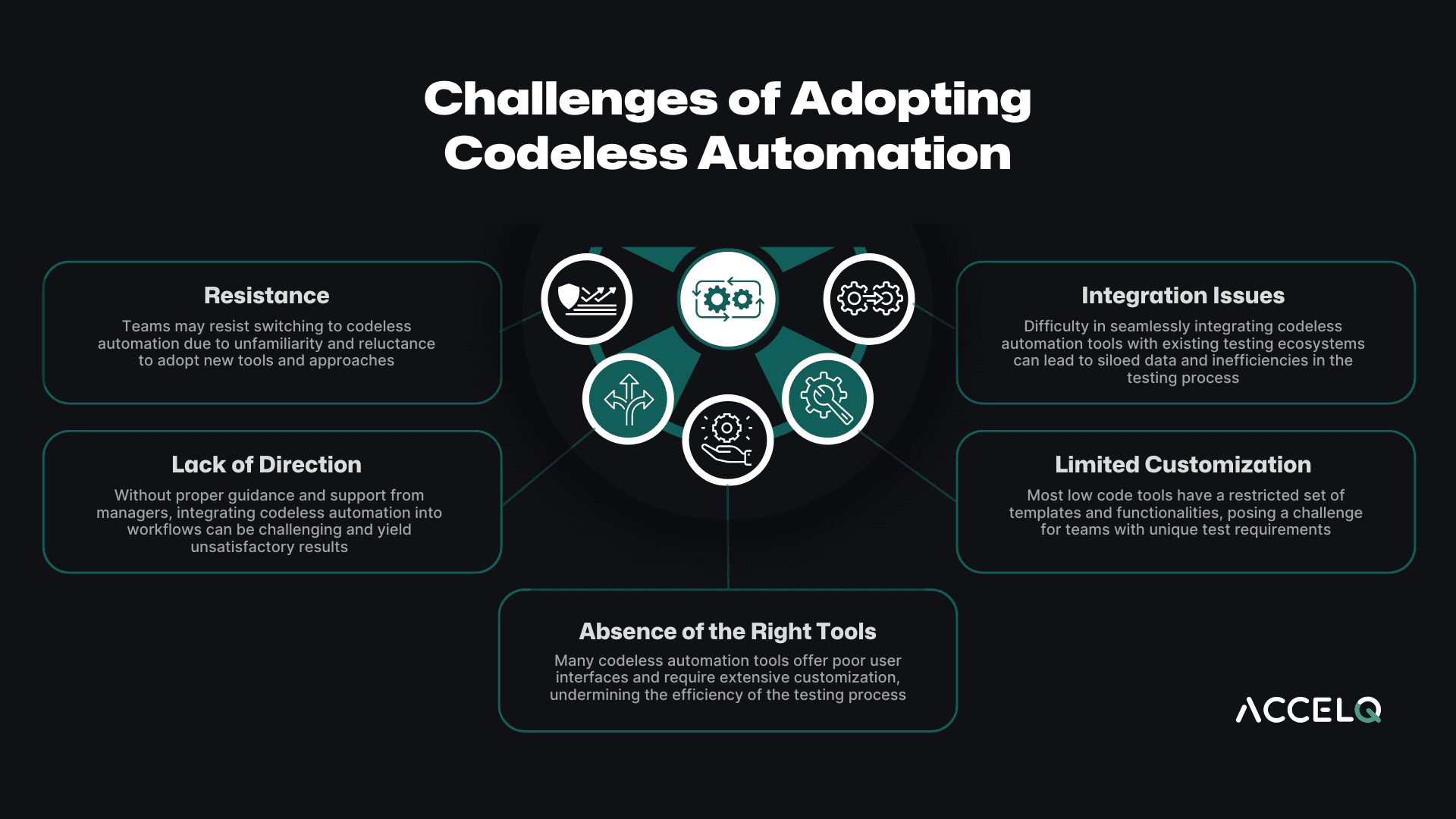Advancing Your Organization with Low Code Test Automation

Every business wants to bring products to the market quickly. While low code no code test automation helps organizations achieve this goal, testers must keep several things in mind to advance their organization with low code no code.
What is the Importance of Low Code Test Automation?
Low code test automation accelerates the testing lifecycle. With simple, user-friendly interfaces and drag-and-drop elements, teams can craft complex testing workflows without coding. In an era where speed is money, codeless platforms help unlock a treasure trove of new possibilities.
With several customization and integration capabilities, low code automation tools help address unique real-world challenges. While achieving 100% test coverage is difficult, codeless platforms help in testing a wide range of test scenarios. Zero coding requirement makes it easy for testers to spin up test cases and verify and validate quality applications.
What are The Challenges of Adopting Codeless Automation?
While codeless automation brings several benefits, there are also some limitations. Let’s look at the top challenges of adopting low code no code automation testing:
Resistance:
Switching to codeless automation testing is often met with a lot of resistance. Since teams are used to a particular way of working, the idea of adopting test automation overwhelms many. From confusion to distress, it takes a lot of schooling and persuasion to convince teams of the benefits of embracing low code automation.
Lack of direction:
A lack of direction from managers and leaders is another common hurdle to adopting codeless automation. Very often, teams struggle to integrate codeless automation into their daily workflows. With testing teams stretched thin, limited support and backing from superiors lead to unimpressive results.
Absence of the right platform:
The market is filled to the brim with a codeless automation platform.. But not all deliver superior outcomes. Many offer poor user interfaces and demand substantial effort in customizing and integrating use cases. This dilutes the whole purpose of low code automation and extends the testing lifecycle – instead of shortening it.
Limited customization:
Most low code platform offer a limited set of templates and functionalities. Because of this, customization is a real challenge for teams that have unique test requirements to address.
Integration issues:
Test automation teams rely on a plethora of tools to carry out effective QA. When adopting codeless automation, many teams face integration hurdles. Not all platforms can seamlessly integrate with the existing testing ecosystem, leading to siloed data and other loopholes in the test automation process.
Do more with Test Automation
Discover more ways to add ‘low-code no-code‘ test automation in your workflows

What Does it Take to Embrace Low Code Automation?
Without a doubt, Low code automation testing platforms can completely transform the test automation process and reduce test automation execution times. But to maximize results, you must keep these tips in mind:
Start small:
While it's tempting to implement codeless automation throughout the entire testing lifecycle, starting with smaller, manageable segments is more effective. To do this, identify aspects of your QA process that can benefit most from low code testing. Once you experience impressive results, you can extend it across other use cases and embark on a journey of sustained results.
Appoint low code champions:
Low code automation success isn’t just about having your teams adopt no code testing platform. To drive long-term success, you must identify and build a community of codeless automation champions. Selecting skilled members from the development, operations, and testing teams can aid in the successful implementation of low code automation. Such a community of champions can also aid in maturing your testing processes and embracing industry best practices.
Keep it simple:
Low code automation opens doors to unmatched levels of efficiency and productivity. To achieve the best results, it is essential to keep things simple. Instead of having different members build different test cases for different purposes, forge a culture of reusability. Build standardized templates of common testing requirements and tweak them to accelerate testing outcomes.
Educate and train teams:
Codeless automation, no matter how valuable, also requires good training and education. Informing teams about the need and benefits of low code test automation goes a long way toward driving its success. Training them on codeless platforms and teaching them to leverage the various capabilities to their benefit is also important.
Shift testing left:
Gone are the days of running tests after development. To maximize results from Low code no code automation testing, you must shift testing left. This practice of finding and preventing defects early in the testing lifecycle can lead to better-quality products. It also helps teams embrace a culture of continuous and collaborative testing.
Maintain a central code repository:
Another low code automation best practice to follow is developing a central code repository. This can help different members continually commit code into the repository and ensure development and QA are as unified and integrated as possible.
Integrate across the CI/CD pipeline:
Low code automation platforms offer several benefits to citizen developers. However, to ensure they minimize development complexity and make the development process more scalable, you must integrate them across the CI/CD pipeline. This makes them capable of dealing with new features and bug corrections in a faster way.
Use the right platform:
Finding a codeless testing platform that rapidly promotes the adoption of test automation within your organization is key. The right platform can truly add value to your QA process and save extensive time and money. Choose a codeless platform that is easy to implement and use and requires no extra time to learn new skills or build new scripts. Ensure the platform enables sufficient ROI and helps you quickly and efficiently meet shared goals.
Ensure continuous improvement:
You must focus on enabling and ensuring continuous improvement of your codeless strategy. Measuring and monitoring low code success can unearth insight into issues and help you plan for appropriate workarounds.
Conclusion
Implementing low code no code QA automation across the organization is a multi-step process. It requires teams to build a culture of codeless automation, adopt the right codeless platform, and train and educate teams on the right usage. As a leading no code test automation platform, ACCELQ delivers a compelling set of test automation features and benefits. It offers an easy-to-use UI and a rich set of templates that make low code automation a breeze.
ACCELQ also easily integrates into existing test ecosystems, enabling teams to achieve true end-to-end quality assurance. Testing teams can seamlessly handle powerful real-world use cases with practically zero coding. Using a single, unified platform, they can meet all their test automation needs.
Explore the differentiating capabilities of ACCELQ today, expand your test strategy with minimal effort, and advance your organization! Contact us to learn more!
Balbodh Jha
Associate Director Product Engineering
Balbodh is a passionate enthusiast of Test Automation, constantly seeking opportunities to tackle real-world challenges in this field. He possesses an insatiable curiosity for engaging in discussions on testing-related topics and crafting solutions to address them. He has a wealth of experience in establishing Test Centers of Excellence (TCoE) for a diverse range of clients he has collaborated with.
Discover More
 How To Write System Test Cases? Use Cases and Benefits
How To Write System Test Cases? Use Cases and Benefits
How To Write System Test Cases? Use Cases and Benefits
 ACCELQ Product Overview
ACCELQ Product Overview

































